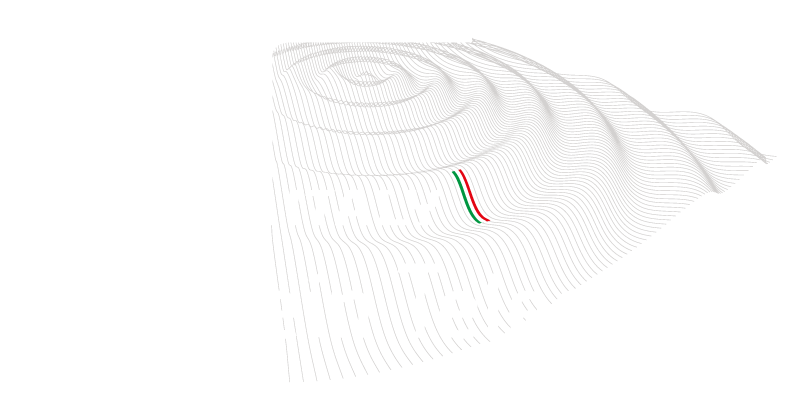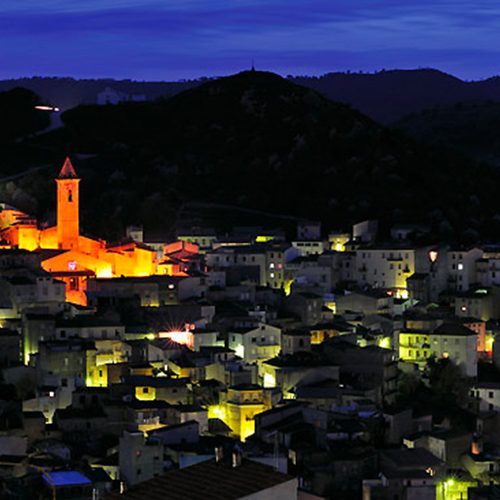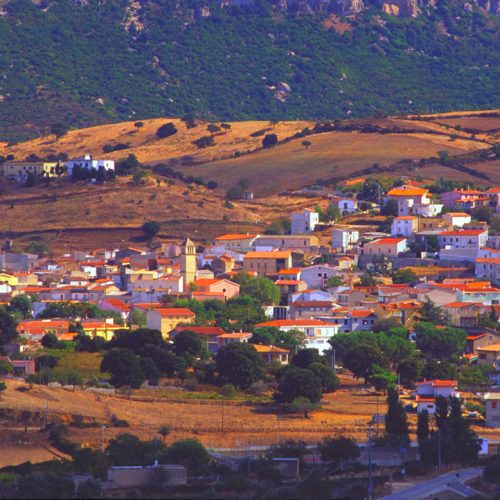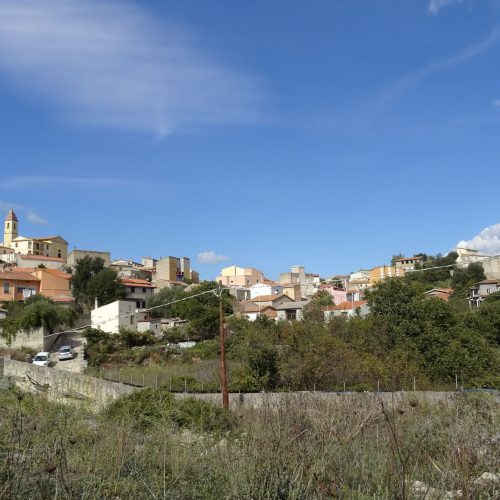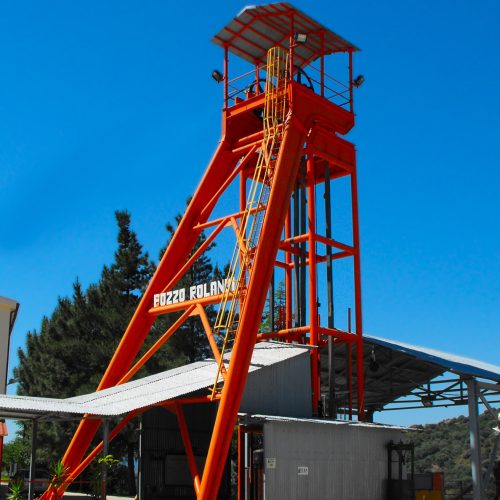The creation of the Einstein Telescope project will open many opportunities and have positive repercussions with an impact on broad and diverse stakeholder communities. This will develop and advance knowledge, technologies, and the economy, and of social and cultural aspects, both locally, in the host site area, and at a regional, national, and international level.
Opportunities and Sustainability
Opportunities
The Einstein Telescope is in its design phase. The impact studies carried out to date are, therefore, preliminary, and continuously updated. They are based on the Conceptual Design Study, funded by the European Commission under the Seventh Framework Programme. The current tentative impact studies contain a margin of uncertainty related to the different solutions that experts are considering. Nevertheless, the different scenarios show a high level of agreement in terms of multiplier effects on output, value added, and employment opportunities.
THE CONSTRUCTION PHASE. The construction phase is estimated to last approximately 9 years. Yet the exact timing will be defined during the operational design phase. It will generate a flow of demand for goods and services involving both the host-country and European companies, fostering the production of intermediate goods and services needed by companies themselves.
COST OF THE WORKS. The total cost of the works is currently under evaluation and the socioeconomic impact assessment was carried out considering a maximum reference value (triangular detector configuration) of 1.7 billion euro, divided into five macro-categories: the site (1 billion euro), the vacuum system (497 million euro), the cryogenics (48 million euro), the seismic insulation (52 million euro), and the optics (157 million euro).
TOTAL OUTPUT EFFECT. The total value of annual transaction flows associated with the construction of the ET (equivalent to the total output), given by the sum of direct and induced demand over the 9 years of construction, is estimated to be 6.184 billion euro.
VALUE ADDED EFFECT. In terms of value added, this implies adjusting the total output effect figure to eliminate any duplication effects related to the fact that along the value chain some transactions correspond to a cost for one company and a revenue for another, the total value is 2.263 billion euro. This effect corresponds to the effect on the Gross Domestic Product (GDP) generated by the construction phase of the ET itself.
EMPLOYMENT EFFECT. The total potential effect in terms of employment opportunities, considering direct and induced effects, is estimated to be approximately 4,000 people working full-time each year for the estimated 9 years of construction. Since the construction requires the rotation of different professionals at various stages of construction, there will be specialists who can work for parts of a year. Thus the number of people involved will be more than 4,000 per year. This workforce will be distributed throughout Europe, with an indicative expectation of approximately 70% in the host nation.
9
6.2
Overall, 65-75% of the impact will be at the local-regional-national level, amounting to an output of 4.329 billion euro. It will mainly affect companies in the construction, mechanical engineering, engineering technical studies, geological, transportation, retail and wholesale, hospitality and catering sectors and their respective supply chains. The remainder – approximately 1.855 billion euro of output – will involve foreign suppliers, both European and non-European, working in the production of the advanced technologies used in the creation of the interferometer: cryogenics, optics, seismic insulation, and vacuum system.
OPERATING PHASE.When fully operational, the facility will host highly qualified personnel consisting of administrative staff, but mainly researchers, technologists, and technicians, who will work in the laboratory and will live on site. This community will include both staff hired on a permanent basis by the facility (approximately 160 people) as well as regular flows of visiting scientists. This results in an estimate of at least 250 researchers per year with an average individual stay of 20 days.
Experiments and the normal operation of the ET will result in a flow of demand for goods and services, which in many cases will be high-tech, with positive implications for the process of business creation (spinoff) in high-productivity sectors, both locally and nationally. The direct effect of demand for goods and services by the ET is combined with the effect induced by the fact that the companies that will supply the goods and services will in turn demand additional goods and services as inputs. The estimate of the overall economic effect resulting from the sum of these direct and induced effects is based on available information regarding similar facilities, such as Virgo and INFN Gran Sasso National Laboratories. Such information are appropriately evaluated through a survey (expert opinion) conducted on a group of INFN scientists and estimated to be as follows:
TOTAL OUTPUT EFFECT. The value of the annual flow of transactions related to the operation of the ET is 127.5 million euro for a total present value of 2.7 billion euro assuming, by convention, that the ET is expected to operate for 30 years.
VALUE ADDED EFFECT. The annual value-added flow corresponding to the total output effect is estimated to be 45.3 million euro per year for a total present value of 1.05 billion over an expected 30 years.
EMPLOYMENT EFFECT. The potential impact on employment, considering direct and induced effects, is estimated to be 713 units per year, excluding visiting researchers and ET employees. The total effect over 30 years is 21,390.
30
2.7
50-60% of the impact when fully operational will fall within the regional area – amounting to an output of 70 million per year and 1.5 billion over the 30 years of operation. It will mainly involve companies from the hospitality and catering services, cleaning services, retail and wholesale trade, security services, infrastructure maintenance services, technological systems and software, heating fuels and electricity sectors and their respective supply chains.
The presence of highly qualified personnel, with corresponding salary levels, will result in a spending capacity locally supported by contributions from all nations that will participate in the project. The remainder will involve non-local, national, and international suppliers, with an output of approximately 60 million a year and 1.2 billion over the 30 years of operation. This part of the impact will involve companies from the sectors and supply chains of technological machinery construction, software, hardware, and a part of their maintenance.
The activities that will take place in the framework of the ET project will certainly have repercussions in terms of technology transfer to suppliers of goods and services and along the related value chain. This is because the machinery, instruments, hardware, and software required for each experiment that will be conducted in the facility will need to be developed through constant interaction between researchers and suppliers, with a continuous transfer of skills and knowledge. Suppliers, subject to demands formulated according to the highest international standards, will therefore have the opportunity to produce goods and services that are necessarily very high in innovation, both in terms of process and content, given that these will often be components produced ad hoc for the needs of the ET scientific community. This learning-by-doing process results in a significant impact in many dimensions that positively affect the market value of the companies involved, including internationalisation, technological innovation, market knowledge, new product development and opening to new markets, opening new business units and research and development units. These are business impact dimensions that are highly significant for the sustainable and inclusive socioeconomic progress of a country.
In addition to the socioeconomic impact, there is an additional impact on society related to scientific production, innovation and technology transfer, growth of human capital, scientific attractiveness of the site, and, thus, dissemination of knowledge generated by the ET project.
When fully operational, the ET will attract a steady flow of young talent, PhD students, trainees, and researchers who, during their stay at the research facility, will acquire skills that will positively affect the continuation of their professional careers.
Moreover, meetings, conferences, events both among experts and the public, and initiatives to disseminate scientific culture, in which informal contact and the exchange of ideas is valuable, can take place near the Einstein Telescope site. This contributes to high-quality tourism with greater independence from seasonality.
Sustainability
The innovative characteristics of the ET will not only concern the scientific equipment but also all the elements that will contribute to its construction. Environmental, regional, and energy sustainability aspects will be the priority and constitute an element of intrinsic value for the entire project, which will be able to offer insights for developing and replicating good practices outside its specific sector as well. From the earliest design ideas, the ET’s scientific community has followed criteria inspired by awareness and responsibility in relation to the local area and the environment. This effort encouraged the identification of solutions that ensure the efficiency of new infrastructure while improving the quality of services for local citizens and use of the area.
The pre-design studies, funded by the NRRP through the ETIC project, must comply with the basic DNSH (Do No Significant Harm) principle and the related guidelines to reduce the impact of infrastructure networks, and must foster the sustainable use of resources (low carbon footprint). For instance, when defining entrances to underground tunnels, landscape-friendly solutions will be used as much as possible, such as entrances placed on vertical walls. Surface buildings and laboratories will also be designed to be immersed in the landscape, using sustainable construction and systems solutions.
- Improvement of the local road system and connection with the main network through road infrastructure for access to the site
- Reclamation of construction site roads to increase the number of trails and establish a network of bicycle routes
- Development of solar based lighting systems
- Improvement of digital connection infrastructure
- Innovation for the wind power sector toward more effective and controlled plants, for instance through vibration monitoring systems that improve plant efficiency
- push towards green energy systems
- surface buildings dedicated to research or hospitality that are energy self-sufficient favouring low carbon footprint construction
- architectural design of buildings and entrances to underground infrastructure enhancing the landscape and making use of local natural materials for construction (cladding and insulation)
- reuse of excavated material for natural hazard mitigation works, such as slope stabilisation and restoration of hydrographic networks
- development of innovative excavated material treatment and reclamation plants to be subsequently used for local waste treatment
- The Sos Enattos site will become the reference centre for research groups in the study, design, construction, and installation phase of the ET and, in the future, could become a visitor centre
- Development of the mine museum, through spaces dedicated to ET science and technologies, promoting the history of the mine and its reconversion into a reference site for frontier research
- Retrieval of hospitality premises (guesthouses and restaurants)
- Retrieval and renovation of technical buildings at the mine, adopting new sustainable technologies as architectural prototypes for the future surface buildings of the ET facility.
- Promotion of the site’s culture as a place of underground exploration, from metalliferous mines and rare materials, such as sphalerite and galena, to excavations for the ET’s tunnels and caves to study the universe and astrophysical events that produce heavy elements, such as lead and gold. In addition, it will be a place to explore the sky, from the nuraghe, a stargazing point, to surface astronomical observatories and underground gravitational observatories such as ET.
